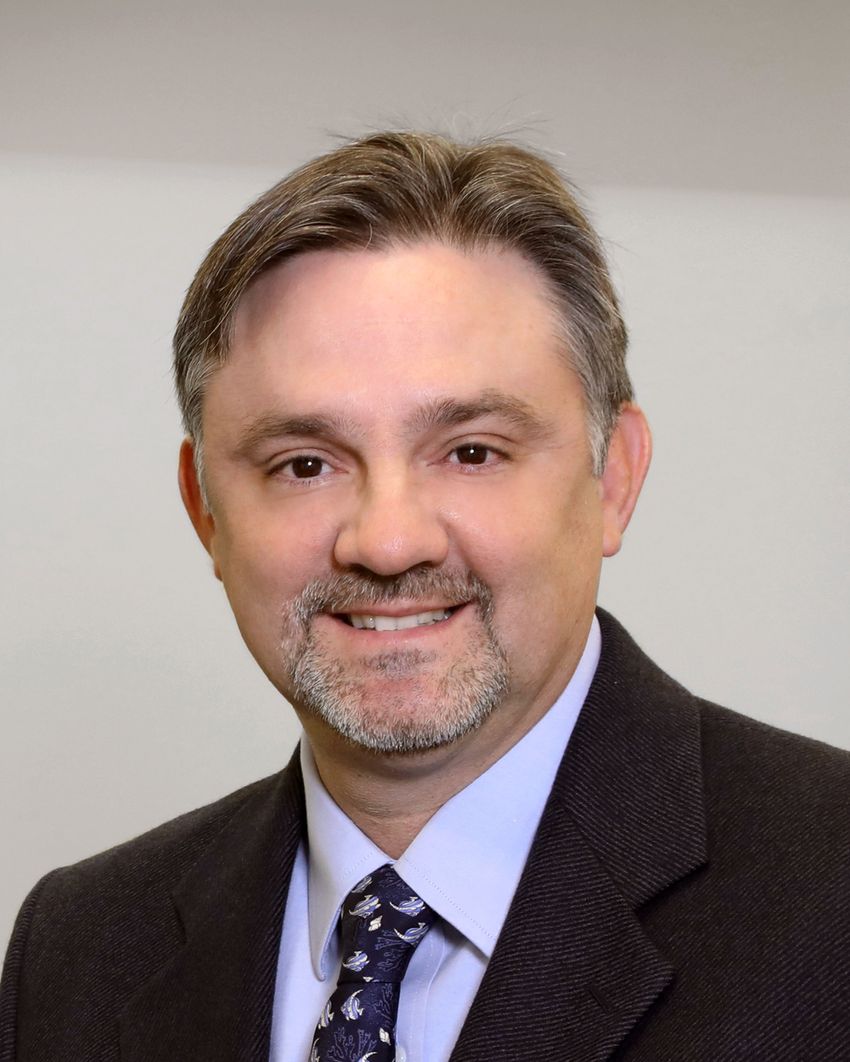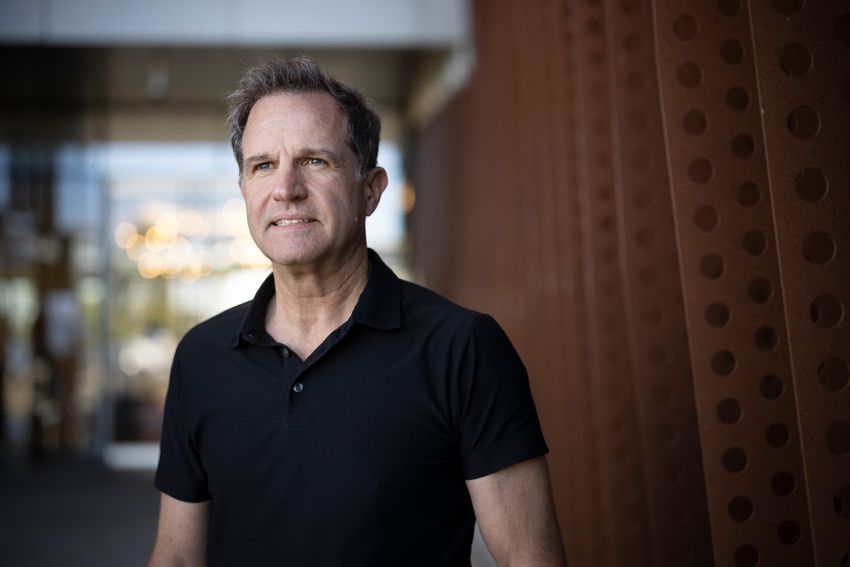Today (September 11), the Lasker Foundation announced this year’s award winners. Jesús (Tito) González, an ion channel biologist formerly at Vertex Pharmaceuticals, Paul Negulescu, a cell biologist at Vertex Pharmaceuticals, and Michael Welsh, a molecular biologist and former physician at the University of Iowa, received the 2025 Lasker~DeBakey Clinical Medical Research Award for their contributions to the development of Trikafta, a three-drug combination that has transformed the lives of over 90 percent of patients with cystic fibrosis, a once fatal disease.
Welsh, who first became motivated to study cystic fibrosis as a medical student in the 1970s, said, “This is way better than I could have ever hoped. I thought at first, maybe, we could slow or stop the progression of the disease, but patients actually have gotten better. It’s just beyond my hopes.”
Salty Sweat Detects Cystic Fibrosis Ion Channel Defects
Cystic fibrosis is a rare genetic disorder that causes abnormally thick mucus to coat organs, mainly the lungs, intestines, and pancreas. This, in turn, results in chronic inflammation, recurring infections, and progressive organ damage. Scientists now know that the disease arises through mutations in a gene called cystic fibrosis transmembrane conductance regulator (CFTR), also commonly known as the cystic fibrosis gene, which encodes a chloride channel protein.
“I still remember the first person I saw with cystic fibrosis when I was a junior medical student,” Welsh said. He learned about all the things that the patient, who was a young girl at the time, couldn’t do, what her life was like, and how short of a time she had to live. Her life expectancy was into the teens at most. “That stuck with me as I trained,” he said.
As Welsh cared for more patients with cystic fibrosis over the next several years, he grew even more dissatisfied with the state of treatment at the time, which typically consisted of antibiotics or physicians pounding on patients’ chests to loosen up mucus in their lungs. “We were doing the best we could, but I also realized that we weren’t changing the fundamental course of the disease,” he said.
Then, in 1983, physiologist Paul Quinton discovered that the sweat glands of patients with cystic fibrosis were impermeable to chloride, impairing the ion’s reabsorption from sweat.1 This finding explained why the sweat of individuals affected by the disease is abnormally salty—sweat tests, whereby physicians measure the amount of chloride in infants’ sweat, are a common method to diagnose cystic fibrosis today. Inspired by Quinton’s work, Welsh wanted to understand how cells in the airway transport salt. He said, “I began to think that maybe I could, with my research focused on electrolyte movement across the airway epithelium, have an impact on these patients.”
How the CTFR Ion Channel Works
In 1989, geneticists Lap-Chee Tsui and Francis Collins identified and sequenced CFTR.2-4 They also discovered the most common disease-causing mutation: a deletion of phenylalanine at position 508 of the protein (ΔF508), which affects about two-thirds of patients with cystic fibrosis.
“A key question at that point was, ‘What does CFTR do?’” Welsh said.
Michael Welsh is a molecular biologist and former physician at the University of Iowa. His research on cystic fibrosis revealed the function of the CFTR protein, highlighted the defects in its mutant versions, and indicated that these functions can likely be rescued using drugs.
Michael Welsh
CFTR belongs to a family of proteins called ABC transporters, which scientists had found to be responsible for pumping chemotherapy drugs out of cells and, as a result, contributed to therapeutic resistance.5 Many researchers at the time were interested in studying these proteins in this context, Welsh said.
He added, “People thought that CFTR must be pumping something into or out of the cell, and maybe that controls chloride transport. We decided to test the simplest hypothesis: that it’s a chloride channel all by itself.”
To do this, Welsh’s team generated mutations in the putative membrane-spanning domain of the protein and observed how that changed its selectivity for different negatively charged ions.6 The researchers found that mutations of the positively charged amino acid lysine in this region altered anion selectivity, supporting their hypothesis that CFTR was indeed a chloride channel. “Matt Anderson, the graduate student who did the work, came running out of the room saying, ‘I can’t believe it worked!’” Welsh said. “That was really fun.”
Having demonstrated CFTR’s function, Welsh’s team went on to characterize the different ways in which the protein may be defective.7 They found that the ΔF508 mutant failed to mature properly and consequently, never reached the cell membrane. The mutant protein’s channel opening ability was also impaired.
Welsh found it curious that Collins’s team, who was working with the mutant protein in frog cells, managed to get the protein to function.8 He then realized, by recalling his own previous work, that researchers typically culture frog cells at a lower temperature. Welsh cooled his cells, and lo and behold, CFTR ΔF508 matured and successfully moved to the plasma membrane. This change even partially rescued some of the mutant protein’s function as a chloride channel.9
“This told us that CFTR ΔF508 was not totally trashed and might be fixable,” Welsh said. “We can’t cool people down and have them live in refrigerators. But it showed that if we can do that, maybe we can also do it with medicine. That ignited the field.”

Jesús (Tito) González is an ion channel biologist, formerly at Aurora Biosciences/Vertex Pharmaceuticals. He developed a fluorescent cell-based assay that allowed researchers to screen cystic fibrosis drug candidates in a high-throughput manner.
Jesús (Tito) González
A Cell Membrane Dye Enables High-Throughput Cystic Fibrosis Drug Screen
In the 1990s, gene therapy was gaining popularity, and considering the genetic bases of cystic fibrosis, this approach seemed both attractive and promising. But the death of 18-year-old Jesse Gelsinger, who was involved in a gene therapy clinical trial for his metabolic disorder, halted progress in the field for some time.
“That really put a black cloud over gene therapy at the time. There was uncertainty on what’s the best way to move forward,” said González, who then worked for Aurora Biosciences, a startup biotechnology company co-founded by his postdoctoral fellowship mentor, Noble laureate biochemist Roger Tsien.
Luckily, González said, gene therapy wasn’t the only option that cystic fibrosis researchers were considering at the time. Another up-and-coming technology in the 1990s, called combinatorial chemistry, allowed scientists to rapidly synthesize large numbers of molecules. But researchers lacked a high-throughput method to assess the function of these drug candidates. González explained that to evaluate whether these molecules could correct mutant CFTR function, researchers had to rely on low-throughput methods, such as patch-clamp electrophysiology. This approach only allowed researchers to screen a handful of molecules per day.
To bridge this gap, González’s team at Aurora Biosciences, overseen by Negulescu, developed a fluorescent cell-based assay, which according to Negulescu, “was very unusual at the time.”10,11 González had co-invented a cell membrane dye that could detect changes in membrane potential with Tsien while he was a postdoctoral fellow at the University of California, San Diego.12,13 At first, the researchers wanted to use it to study the communication between neurons. González later adapted it to assess CFTR function such that when researchers stained cells with the plasma membrane dye and zapped them with light, properly functioning CFTR would emit blue light, while its dysfunctional counterpart, glowed orange.
“That work grew and started to look promising, then snowballed a little bit, leading to a larger deal,” González said. Around that time, Vertex Pharmaceuticals acquired Aurora Biosciences. González added, “That brought a lot of drug development expertise and really drove and moved this effort into the clinic.”

Paul Negulescu is a cell biologist at Vertex Pharmaceuticals. He led the development of Trikafta, the triple combination drug for cystic fibrosis, and its transition into the clinic.
Dina Rudick, Anthem Multimedia
Out of the Lab and into the Lives of Cystic Fibrosis Patients
As Negulescu led Aurora’s transition into Vertex, he oversaw the drug development process from its early conceptual stages and all the way into patients. “I’ve been a bit of a linker,” Negulescu said. “I’m happy to be part of that arc and to be able to represent that.”
Negulescu said that one of his team’s approaches, which was uncommon at the time, was to not fix everything that’s wrong with CFTR ΔF508 at once using just one molecule. Instead, the team ran two separate screens to identify different molecules to correct each of the mutant protein’s key defects: its inability to mature and its impaired ion channel opening. “The idea is that if we found both types [of molecules], we could combine them later to produce the maximum benefit possible on the most common mutation in cystic fibrosis,” Negulescu said.
The first drug that the researchers discovered, ivacaftor, rescued CFTR’s channel opening function. However, it couldn’t help patients with the ΔF508 mutation, likely because the protein never reached the cell membrane. Nevertheless, the drug benefited individuals with a less common CFTR mutation, G551D, and the United States FDA approved its use in 2012. “There are only about 3,000 people in the world with this mutation, and we ended up recruiting most of the population that was eligible in these studies—it’s incredible,” said Negulescu.
The second drug, lumacaftor, helped CFTR ΔF508 mature and get to the plasma membrane. The researchers found that ivacaftor and lumacaftor worked better together than alone, and the combined formulation of the two, Orkambi, was approved by the FDA in 2015. However, the researchers found that lumacaftor induces an enzyme that degrades ivacaftor, compromising Orkambi’s success. So, they replaced lumacaftor with tezacaftor, which works similarly but doesn’t degrade ivacaftor, and the new combination, Symdeko, gained FDA approval in 2018. But even that only worked for patients who had two copies of CFTR ΔF508, which comprised of just about 50 percent of individuals with cystic fibrosis.
So, Negulescu’s team sought another drug that could improve this outcome, and they ran their screen in the presence of both ivacaftor and tezacaftor. This led to elexacaftor’s discovery. The three drugs together, called Trikafta, could also help people with one copy of CFTR ΔF508 and a second copy of another CFTR mutation. “We could only have discovered that third element by screening for it in the presence of the other two, which we had found earlier,” Negulescu said.
The FDA approved Trikafta in 2019, and the drug has dramatically reduced the number of lung transplants and hospital stays due to infections, which are major issues for patients with cystic fibrosis. Trikafta also significantly improves patients’ quality of life, and individuals who start taking it as children or teenagers are expected to have near-normal life expectancies.
“A lot of people do great work but never get to see the outcomes of this work,” Welsh said. “I feel incredibly grateful and very lucky that I get to see these people who now have better lives.”
Today, Welsh and Negulescu continue to study cystic fibrosis. They hope to help the five to 10 percent of patients who don’t respond to Trikafta.
“Trikafta was a huge milestone because it showed us that we could transform the disease for most people,” Negulescu said. “But our goal is that everyone with cystic fibrosis should have an effective therapy.”
- Quinton PM. Chloride impermeability in cystic fibrosis. Nature. 1983;301(5899):421-422.
- Kerem BS, et al. DNA marker haplotype association with pancreatic sufficiency in cystic fibrosis. Am J Hum Genet. 1989;44(6):827-834.
- Riordan JR, et al. Identification of the cystic fibrosis gene: cloning and characterization of complementary DNA. Science. 1989;245(4922):1066-1073.
- Rommens JM, et al. Physical localization of two DNA markers closely linked to the cystic fibrosis locus by pulsed-field gel electrophoresis. Am J Hum Genet. 1989;45(6):932-941.
- Choi CH. ABC transporters as multidrug resistance mechanisms and the development of chemosensitizers for their reversal. Cancer Cell Int. 2005;5:30.
- Anderson MP, et al. Demonstration that CFTR is a chloride channel by alteration of its anion selectivity. Science. 1991;253(5016):202-205.
- Welsh MJ, Smith AE. Molecular mechanisms of CFTR chloride channel dysfunction in cystic fibrosis. Cell. 1993;73(7):1251-1254.
- Drumm ML, et al. Chloride conductance expressed by delta F508 and other mutant CFTRs in Xenopus oocytes. Science. 1991;254(5039):1797-1799.
- Denning GM, et al. Processing of mutant cystic fibrosis transmembrane conductance regulator is temperature-sensitive. Nature. 1992;358(6389):761-764.
- González JE, Negulescu PA. Intracellular detection assays for high-throughput screening. Curr Opin Biotechnol. 1998;9(6):624-631.
- González JE, et al. Cell-based assays and instrumentation for screening ion-channel targets. Drug Discov Today. 1999;4(9):431-439.
- González JE, Tsien RY. Voltage sensing by fluorescence resonance energy transfer in single cells. Biophys J. 1995;69(4):1272-1280.
- González JE, Tsien RY. Improved indicators of cell membrane potential that use fluorescence resonance energy transfer. Chem Biol. 1997;4(4):269-277.

